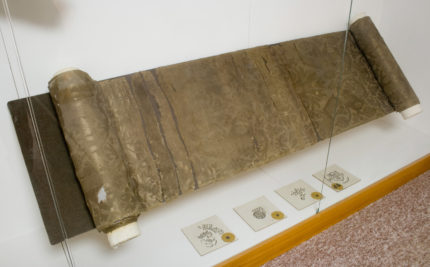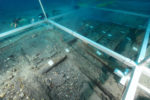 For the first time, plans are being made to send treasures from a 16th century Venetian shipwreck that have rarely been seen, and never outside of Croatia, on an international tour. Danish art curator Line Clausen Pedersen is working with a team of Croatian archaeologists who have been excavating the wreck of the Gagiana, a merchant ship groaning with expensive consumer goods that went down off the east Adriatic coast of what is now Croatia in 1583.
For the first time, plans are being made to send treasures from a 16th century Venetian shipwreck that have rarely been seen, and never outside of Croatia, on an international tour. Danish art curator Line Clausen Pedersen is working with a team of Croatian archaeologists who have been excavating the wreck of the Gagiana, a merchant ship groaning with expensive consumer goods that went down off the east Adriatic coast of what is now Croatia in 1583.
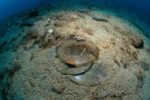 The exact circumstances of its discovery are murky. From what we know, the wreck was discovered in the early 1960s by a fisherman near the islet of Gnalić on the North Dalmatian coast about 17 nautical miles from Zadar. It is at the mouth of the Pašman Channel in the eastern Adriatic, a busy shipping route since antiquity. Authorities learned about the wreck only in 1967 after it was reported by sponge divers.
The exact circumstances of its discovery are murky. From what we know, the wreck was discovered in the early 1960s by a fisherman near the islet of Gnalić on the North Dalmatian coast about 17 nautical miles from Zadar. It is at the mouth of the Pašman Channel in the eastern Adriatic, a busy shipping route since antiquity. Authorities learned about the wreck only in 1967 after it was reported by sponge divers.
 Found at a depth of 82-95 feet, the wreck is reachable by divers and there were rumors that Belgian sport divers had been looting the artifacts that peppered the surface. The government of the then-Yugoslavia directed the site be explored by archaeologists and that archaeological materials be recovered and conserved. The first official excavation began October 1967 and the salvage of artifacts from the ship and its cargo continued through 1968. Later archaeological investigations in the 1970s opened trenches to reveal information about the lower layers of the wreck.
Found at a depth of 82-95 feet, the wreck is reachable by divers and there were rumors that Belgian sport divers had been looting the artifacts that peppered the surface. The government of the then-Yugoslavia directed the site be explored by archaeologists and that archaeological materials be recovered and conserved. The first official excavation began October 1967 and the salvage of artifacts from the ship and its cargo continued through 1968. Later archaeological investigations in the 1970s opened trenches to reveal information about the lower layers of the wreck.
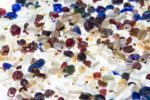 Six excavations between 1967 and 1996 and, most recently, a University of Zadar and Texas A&M campaign from 2012 to 2014, retrieved an enormous quantity of objects, more than 20,000 of them, including two anchors, hundreds of cannons and cannonballs, eight bronze guns, and an incredibly rich and varied collection of goods that were the ship’s cargo. Destined for Constantinople were more than 5,500 Murano glass objects of 86 different types, including
Six excavations between 1967 and 1996 and, most recently, a University of Zadar and Texas A&M campaign from 2012 to 2014, retrieved an enormous quantity of objects, more than 20,000 of them, including two anchors, hundreds of cannons and cannonballs, eight bronze guns, and an incredibly rich and varied collection of goods that were the ship’s cargo. Destined for Constantinople were more than 5,500 Murano glass objects of 86 different types, including 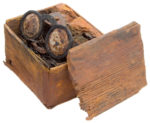 beads, mirrors, window panes, wine glasses, flasks, vases, cups and bowls. There were brass chandeliers, candle snuffers, wooden boxes filled with dozens of leather-framed eyeglasses, razors for shaving, pins, needles, hawk bells, 177 feet of embroidered silk damask and raw materials like coils of brass wire, ingots of lead carbonate, cinnabar, mercury and sulfur.
beads, mirrors, window panes, wine glasses, flasks, vases, cups and bowls. There were brass chandeliers, candle snuffers, wooden boxes filled with dozens of leather-framed eyeglasses, razors for shaving, pins, needles, hawk bells, 177 feet of embroidered silk damask and raw materials like coils of brass wire, ingots of lead carbonate, cinnabar, mercury and sulfur.
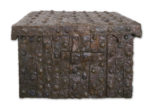 The artifacts provided key clues to the date and identity of the shipwreck. Two of the guns, sacri (sakers) were cast by Giovanni II Alberghetti in 1582, so the wreck couldn’t have happened any earlier than that. A lead seal bearing the initials of doge Nicolò da Ponte (r. 1578-1585) put the latest possible date at 1585. Archival research did the rest, and the ship was identified as the Gagiana, a merchant vessel sailing from Venice bound for Constantinople lost around Gnalić in November 1583.
The artifacts provided key clues to the date and identity of the shipwreck. Two of the guns, sacri (sakers) were cast by Giovanni II Alberghetti in 1582, so the wreck couldn’t have happened any earlier than that. A lead seal bearing the initials of doge Nicolò da Ponte (r. 1578-1585) put the latest possible date at 1585. Archival research did the rest, and the ship was identified as the Gagiana, a merchant vessel sailing from Venice bound for Constantinople lost around Gnalić in November 1583.
The Gagiana might be compared to a container ship today, Clausen Pedersen explains. But the vessel never reached its destination, Istanbul. Instead it sank in mysterious circumstances in the Adriatic Sea off the coast of modern-day Croatia. “The legend is that the captain sunk it and ran off with diamonds,” the curator says. Its high-value cargo was insured, and much of the paperwork survives in archives in Venice. “One set of diamonds is registered and another was apparently on board but not registered. That is part of the narrative,” she says.
 Many of the records of the Gagiana‘s voyage have survived in Venice. We know the ship belonged to the Da Gagliano family of Venice, wealthy traders whose business network extended into the Ottoman Empire. Much of the cargo of luxurious goods was destined for the Ottoman Sultan himself, Murad III, whose beloved (and very powerful) mother was Venetian, to decorate his massive new Imperial Harem.
Many of the records of the Gagiana‘s voyage have survived in Venice. We know the ship belonged to the Da Gagliano family of Venice, wealthy traders whose business network extended into the Ottoman Empire. Much of the cargo of luxurious goods was destined for the Ottoman Sultan himself, Murad III, whose beloved (and very powerful) mother was Venetian, to decorate his massive new Imperial Harem.
The Gagiana‘s cargo is a unique snapshot into the luxury goods produced in Venice for export or traded through Venice. The spectacles were made in Nuremberg. The brass chandeliers were made in Lubeck. The purple-dyed damask from Lucca. The Murano glassware is particularly spectacular for its vast range of forms and quality. The sheer numbers of artifacts required a dedicated space for their conservation and display and to ensure the integrity of the collection. A new museum was created in Biograd in 1970 solely for the treasures of the Gagiana.
A selection of fine objects went on display at the Croatian History Museum in Zagreb in 2013-2014 and the exhibition was a great success. Clausen Pedersen and the Croatian team are hoping to expand that success and share the treasures of the Gnalić wreck outside the borders of Croatia.
The Danish curator has held early talks with major museums in the US, Europe, and Asia, and is also approaching possible sponsors. “My hope is to attract the shipping industry to get involved in the development of the exhibition,” she says. “They have so much money and they usually do not directly support art or culture. I figured it is a new target group,” she adds. “A shipwreck such as this obviously relates to the legacy of trade and shipping, a large and growing industry even today, the potential of collaboration is great.” She hopes the sponsor will fund some “extravagant technology” that allows a visitor to the exhibition to control an underwater exploration of the shipwreck—because “why not?” she says.
